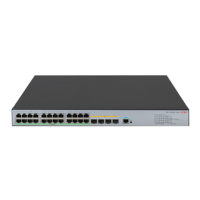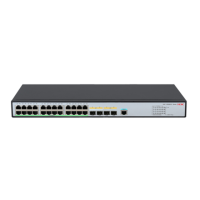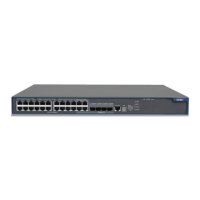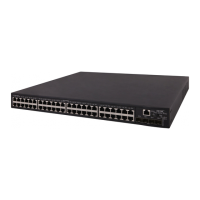10
Step Command Remarks
2. Specify a global
source address for
VXLAN tunnels.
tunnel global
source-address
ip-address
By default, no global source address is
specified for VXLAN tunnels.
A VXLAN tunnel uses the global source
address if you do not specify a source
interface or source address for the tunnel.
3. Create a VXLAN
tunnel interface and
enter tunnel interface
view.
interface tunnel
tunnel-number
mode vxlan
By default, no tunnel interfaces exist.
The endpoints of a tunnel must use the same
tunnel mode.
4. Specify a source IP
address or source
interface for the tunnel.
source
{ ipv4-address |
interface-type
interface-number }
By default, no source IP address or source
interface is specified for a tunnel.
This step specifies the source IP address in
the outer IP header of tunneled VXLAN
packets. If an interface is specified, its primary
IP address is used.
5. Specify a destination
IP address for the
tunnel.
destination
ipv4-address
By default, no destination IP address is
specified for a tunnel.
Specify the remote VTEP's IP address. This IP
address will be the destination IP address in
the outer IP header of tunneled VXLAN
packets.
As a best practice, do not configure multiple
VXLAN tunnels to use the same source and
destination IP addresses.
Assigning VXLAN tunnels to a VXLAN
To provide Layer 2 connectivity for a VXLAN between two sites, you must assign the VXLAN tunnel
between the sites to the VXLAN.
You can assign multiple VXLAN tunnels to a VXLAN, and configure a VXLAN tunnel to trunk multiple
VXLANs. For a VXLAN, the system floods unknown unicast, multicast, and broadcast traffic to each
tunnel associated with the VXLAN.
To assign VXLAN tunnels to a VXLAN:
Step Command Remarks
1. Enter system view.
system-view
N/A
2. Enter VSI view.
vsi
vsi-name N/A
3. Enter VXLAN view.
vxlan
vxlan-id N/A
4. Assign VXLAN tunnels
to the VXLAN.
tunnel
{
tunnel-number |
all
}
By default, a VXLAN does not contain any
VXLAN tunnels.
For full Layer 2 connectivity in the VXLAN,
make sure the VXLAN contains the VXLAN
tunnel between each pair of sites in the
VXLAN.
Mapping ACs to a VSI
A VSI can use a dynamic or static Ethernet service instance as an AC.

